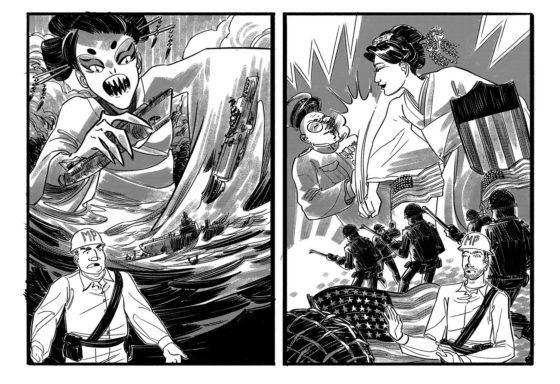
“More than 70 of the players and coaches from the 1942 Rose Bowl would put on U.S. military uniforms, with many distinguishing themselves in battle.”
By Brian Curtis
ON JANUARY 1, 1942, as President Franklin Roosevelt welcomed British Prime Minister Winston Churchill and his aides back to the White House as part of the Arcadia Conference to discuss America’s recent entry into World War II, a group of boys took to the football field under rainy skies in Durham, North Carolina, for what was to become the most unusual Rose Bowl Game ever played.
When the New Year’s Day match-up was originally announced on Dec. 1, underdog Oregon State was slated to take on legendary coach Wallace Wade and his undefeated Duke squad in Pasadena, California, home to the Rose Bowl. But the attack on Pearl Harbor a week later changed everything. Suddenly, America was at war and military officials believed that a large crowd along the Rose Bowl parade route and in the stadium itself were simply too tempting of targets for the Japanese. So at the urging of Lt. General John Lesesne DeWitt of the Fourth Army – the commander in charge of protecting the West Coast — the game was called off.


But the American spirit prevailed days later, and with official Rose Bowl sanction, the game was back on. But this time it would be played thousands of miles away in tiny Durham, N.C. The players for Oregon State boarded a cross-country train missing a teammate, as Japanese-American Jack Yoshihara was prohibited from traveling to the East Coast and would eventually be sent to an internment camp in Idaho, despite his eagerness to serve his country.
The boys who hit the field on New Year’s Day, 1942 knew that war lay ahead for them. For some, that meant enlistment in the hours immediately after the game; for others, their service would come in the months and years ahead. More than 70 of the players and coaches from the 1942 Rose Bowl would put on U.S. military uniforms, with many distinguishing themselves in battle.
Three years after the famous match-up, Oregon State half-back, Bob Dethman, would valiantly hold the line as a Marine on the sand and ash of Iwo Jima, earning a Bronze Star for his heroism.
During that same battle, Duke tackle, Bob Nanni’s blood would forever leave its mark on the tiny island, as many of his former teammates fought just yards away.

Wallace Wade himself earned accolades with a Bronze Star and France’s Croix de Guerre with Palm leading the 272nd artillery, serving in the snowy fields of Europe.
There were players who served in Guadalcanal and in the Battle of the Bulge; on the beaches of Normandy and in the waters of Okinawa.
In all, four boys from that Rose Bowl Game lost their lives in the war, their bodies returned home years later. Their 1942 Rose Bowl rings that they were wearing when they were killed were sent home long before.

Oregon State’s Frank Parker and Duke’s Charles Haynes were opponents in Durham but comrades in the 349th Infantry Regiment in Italy. They would exhibit the true meaning of teamwork during the campaign when Parker dragged the bullet-ridden body of Haynes off a field in Italy to save his life. And it was Haynes who repaid the debt by living a life full of love and laughter.
 The boys returned from the fighting as men, but sadly, not all lived happily ever after. The scars of war, both inside and out, never went away. They were ordinary Americans who, like millions of their countrymen, did extraordinary things. Their service should never be forgotten.
The boys returned from the fighting as men, but sadly, not all lived happily ever after. The scars of war, both inside and out, never went away. They were ordinary Americans who, like millions of their countrymen, did extraordinary things. Their service should never be forgotten.
Brian Curtis is the author of Fields of Battle: Pearl Harbor, the Rose Bowl and the Boys Who Went to War. The books, which was released on Sept. 27, 2016, is published by Flatiron. For more information, visit: www.fieldsofbattlebook.com









